By Chris Spangler and Kim McDarison
Costumed characters ranging from witches and ghouls to dinosaurs, Spiderman and even an Xbox game haunted the streets of Fort Atkinson during trick-or-treating Sunday held between the hours of 1 and 4 p.m.
According to information posted online by National Geographic, the holiday has become one of America’s favorites, with the publication’s newsletter citing the National Retail Federation’s consumer survey, noting that in 2019, 172 million Americans were planning to participate in the tradition.
The National Geographic newsletter story is here: https://www.nationalgeographic.com/newsletters/history/article/halloween-holiday-october-28.
According to statista.com, of the 18 holidays it ranked that are celebrated in the U.S., in 2021, Halloween was ranked 10th. Thanksgiving and Christmas, respectively, held the top spots.
The full ranking is here: https://www.statista.com/statistics/1277607/most-popular-holidays-in-the-united-states/#:~:text=According%20to%20a%20survey%20conducted%20in%20the%20third,are%20Memorial%20Day%2C%20Mother%27s%20Day%2C%20and%20Veterans%27%20Day.
With the popularity of the activity, one might wonder: Why do children trick-or-treat on Halloween?
According to information presented on history.com, the ritual dates back to ancient Celtic festivals, early Catholic holidays, medieval practices, “and even British politics.”
The activity loosely finds roots in a Celtic festival called Samhain, which was celebrated on Oct. 31. The festival was a means by which to usher in “the dark half of the year,” according to history.com.
A link to the site’s historical explanation of Halloween is here: https://www.history.com/news/halloween-trick-or-treating-origins.
According to dictionary.com, the phrase “trick-or-treat” comes from an English, Scottish and Irish custom called guising or mumming.
Guising, according to the site, is the practice of donning disguises made of “fancy dress” and a mask, and visiting people’s homes on Halloween.
In Canada, the site notes, an early print reference to the term trick-or-treat was found in 1927, with the practice taking hold in America in the 1930s.
A link to the dictionary.com explanation of the phrase is here: https://www.dictionary.com/e/trick-or-treat/.
Whatever the origin of the holiday, its popularity and its most familiar phrase, families in Fort Atkinson on Sunday embraced the spirit of the event.
Pictured are some of the candy-seekers along Monroe Street on the city’s north side.

Dressed as unicorns, Gina Elmore and her husky-shepherd mix dog, “Luna,” greet trick-or-treaters.
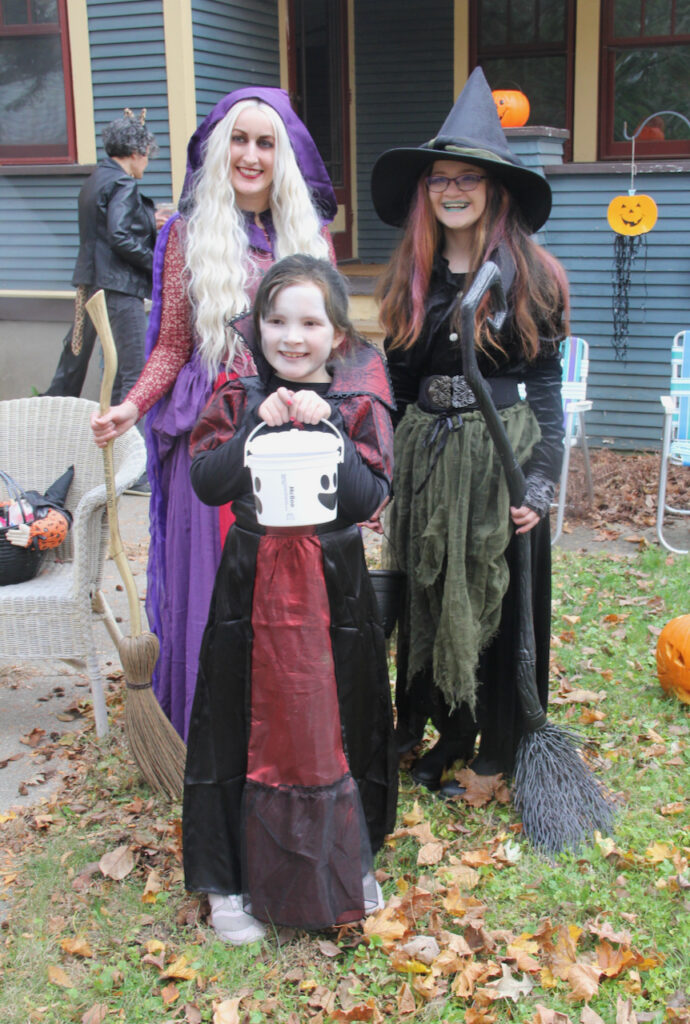
A small coven of witches move between houses.
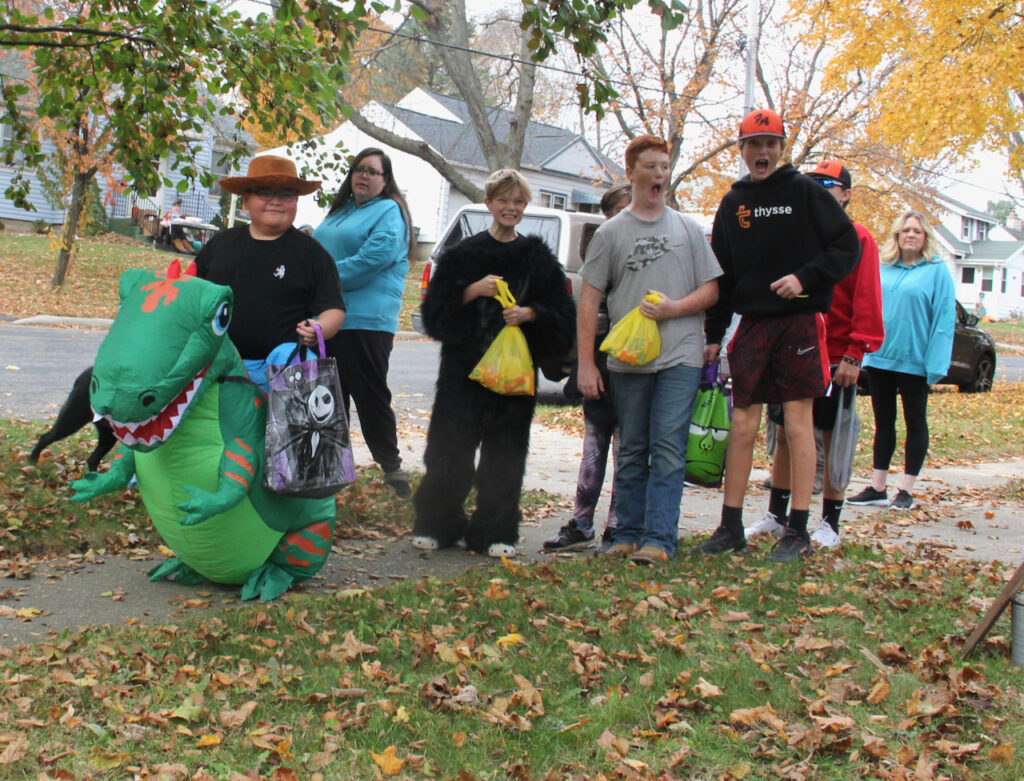
Led by a dinosaur, a group of trick-or-treaters stops to read funny sayings on ornamental “gravestones” found in a community member’s front yard.

Action figures depict, well, action, as they traverse the neighborhood looking for treats.
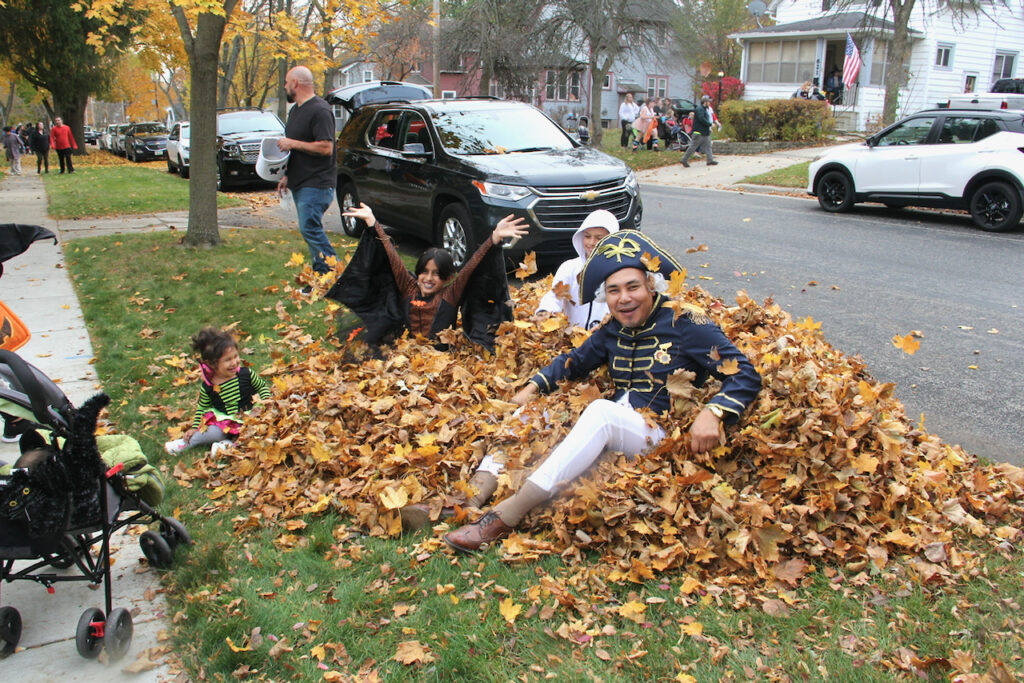
Trick-or-treaters and their family members enjoy jumping in a pile of leaves at the residence of Dan and Debbie Scullin. A nearby sign encouraged them to “go for it.”
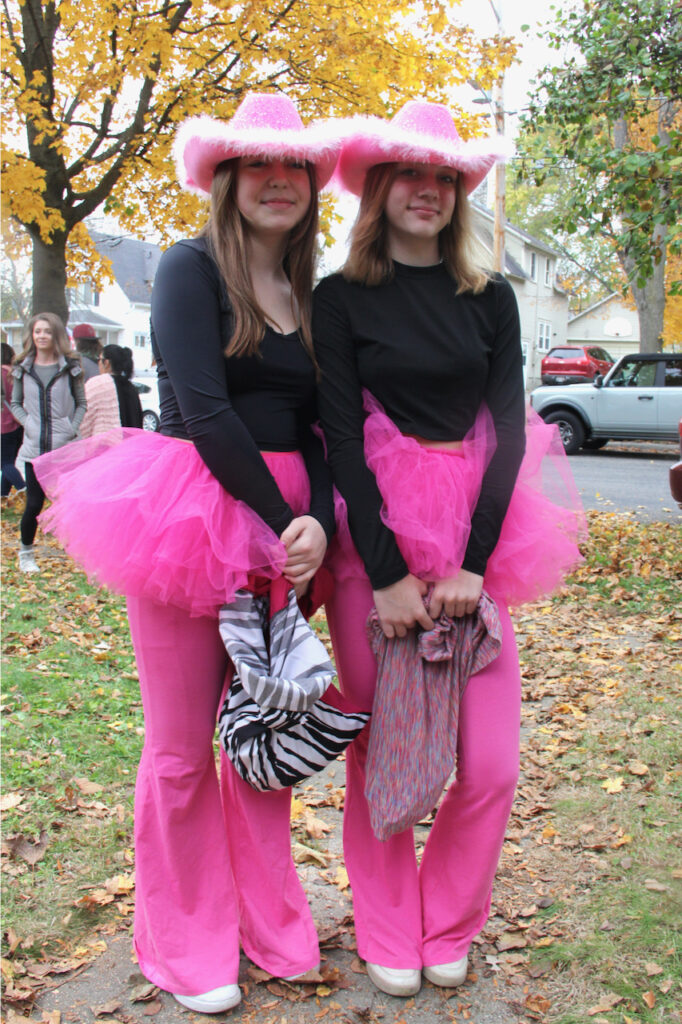
Tutu-garbed cowgirls are pretty in pink.

A full cast of characters are in search of candy. Trick-or-treating in Fort Atkinson was held Sunday, from 1 to 4 p.m.

An angel and a devil enjoy Halloween.
Chris Spangler photos.
This post has already been read 3160 times!
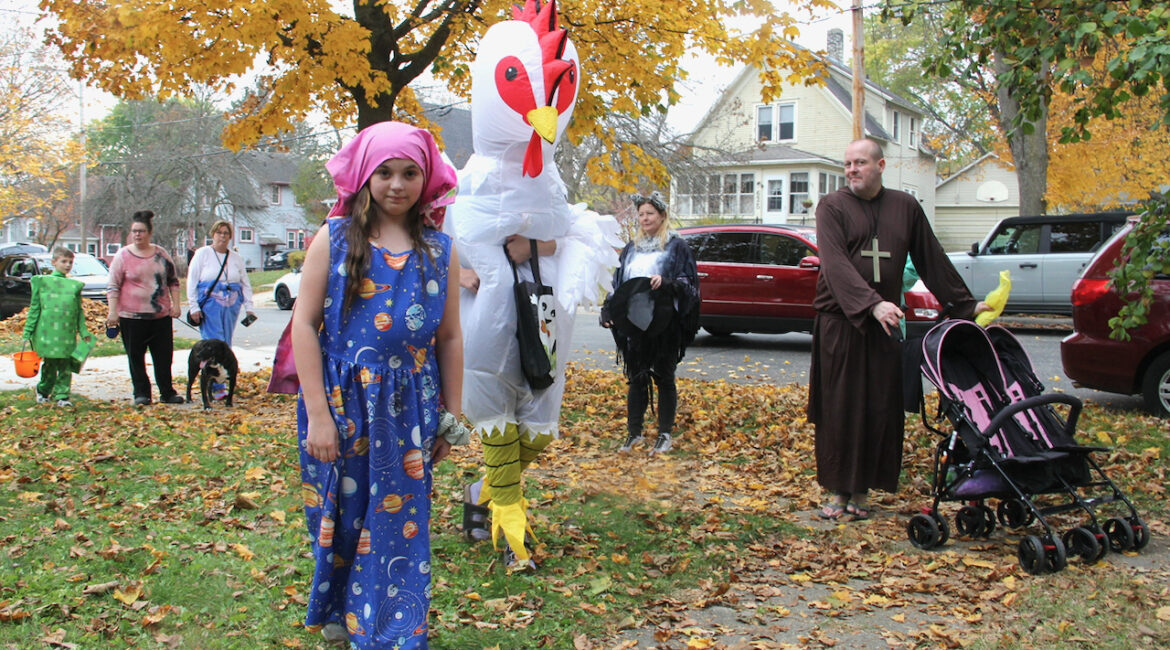
Some very nice pictures Chris.